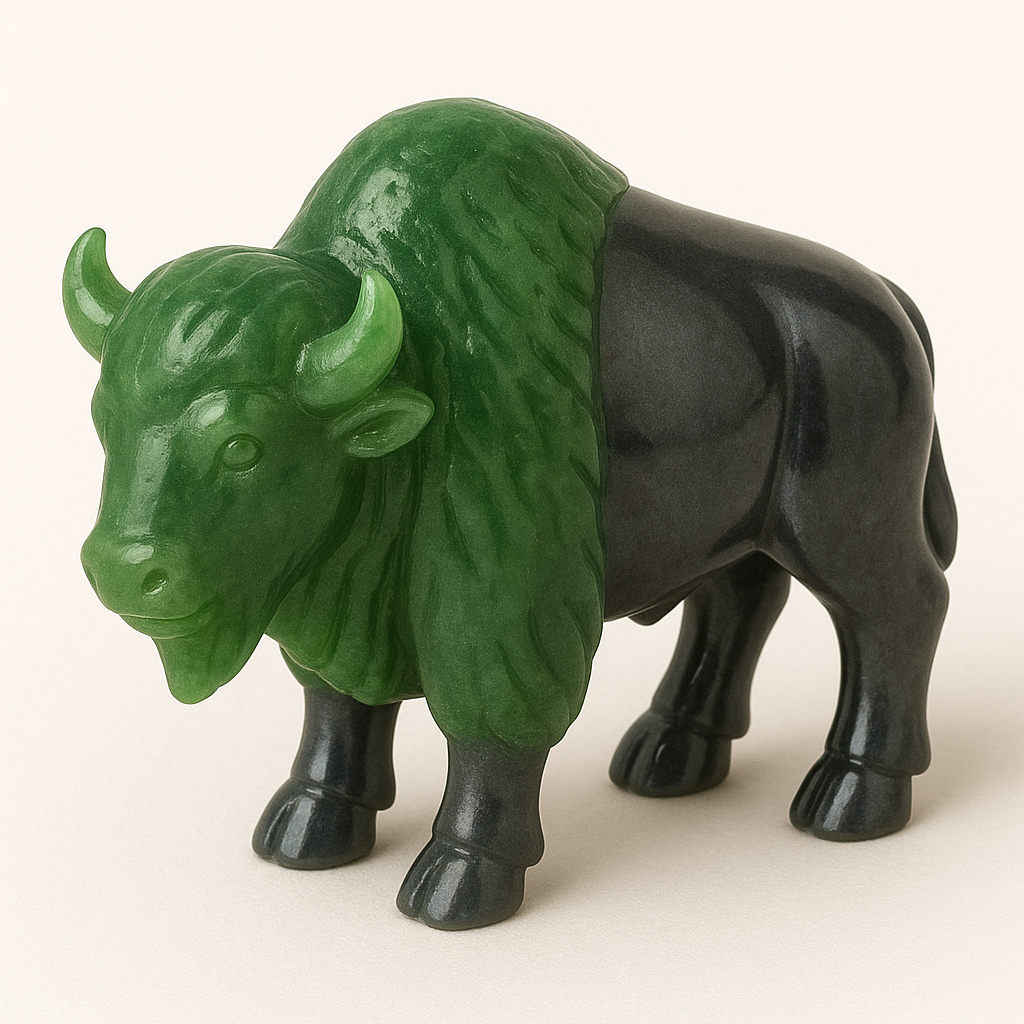
The Symbolism of Bison
Share
Massive yet calm, grounded yet sacred, the bison does not rush—it moves with the memory of the Earth. Its hooves press into soil with reverence, not force, and its breath carries the weight of ancestral knowing. The bison is an emblem of sustenance through stillness, abundance through presence, and the spiritual dignity of the Earth’s great providers. It does not need to speak. Its silence carries the voice of the land itself.
To contemplate the bison is to encounter the archetype of sacred groundedness, of power that feeds rather than conquers, and of the soul that honors life by remaining close to its source.
The Sacred Provider in Cultural Memory
In the traditions of many Indigenous peoples of North America, the bison—often called Tatanka—is regarded as a living symbol of the Great Spirit’s provision. It offered not only food, but hide, bone, sinew, and spiritual teaching. The bison’s body sustained entire peoples, but more than this, it taught gratitude, ceremony, and balance between receiving and respecting.
To take from the bison without reverence was to break the cycle. Thus, in many nations, its appearance in dreams or visions was seen as a direct message from the Spirit world—a call to return to the sacred contract between human and Earth.
The White Buffalo, in particular, became an image of prophecy—symbolizing renewal, peace, and the reawakening of spiritual harmony on Earth. Through such visions, the bison stands not only as a physical teacher, but as a symbol of restoration between worlds.
Stillness, Strength, and the Earth's Patience
The bison does not chase or flee—its movements are deliberate, shaped by instinct and season. It travels in herds not out of fear, but belonging, teaching that strength does not isolate—it gathers. Its eyes do not search outward, but observe inward, reflecting the steady gaze of one who remembers without words.
Despite its weight, it moves gracefully across the plains. Its presence is not violent, yet its charge—when called for—is unstoppable. It teaches the balance of restraint and release, the sacred tension between knowing one’s power and choosing when to use it.
Its very breath is an offering—steam rising from nostrils in winter cold like prayers released from the body.
The bison teaches that abundance is not a product of force, but of alignment with cycles, with land, and with the body as a vessel of spirit.
Resonance with the Energy Centers
The bison resonates primarily with the red-ray energy center—the root chakra, which governs survival, stability, ancestral memory, and connection to Earth energy.
Its being is rooted—its mass, its gait, its grazing—all speak to a consciousness at home in the material realm, not to exploit it, but to live in harmony with it. The red-ray in the bison is not fear-based—it is full, a sacred embodiment of physical presence as spiritual gift. It teaches that when the root is clear, there is no need to strive—only to be.
There is also a secondary resonance with the green-ray energy center—the heart chakra, which governs gratitude, service, and the balance between receiving and giving.
The bison gives of itself—willingly, silently, through generations. In human relationship, it became a symbol of unconditional provision, not from lack of will, but from overflowing abundance matched with humility. The green-ray shines here not as romantic love, but as the Earth’s unshakable love for those who walk upon it.
Together, red and green pulse through the bison as:
embodiment rooted in reverence,
abundance sustained through love,
and presence that gives without depletion.
The One Who Stands with the Land
To walk with the bison is to remember that true strength does not demand—it endures, and that life supports those who walk with the land, not above it. The bison teaches the seeker to honor the body, to move with the Earth rather than against it, and to see survival not as a struggle, but as a sacred inheritance.
The bison does not run from the wind.
It turns into it.
It does not roar.
Its silence shakes the ground.
It teaches:
Stand where the ancestors stood.
Give thanks for what is taken.
And let the Earth walk through you, as you walk upon it.